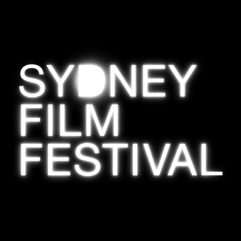
The Sydney Film Festival in June, in Australia’s financial capital, may be Australia’s splashiest, with galas and gowns, a film palace and distinguished guests hosted in the Town Hall. One of the notable features of this year’s festival, as CMSI’s Pat Aufderheide reported in Documentary magazine, was the multifaceted look at aboriginal creativity and experience. The festival opened with a documentary:
We Don’t Need a Map, by noted aboriginal maker Warwick Thornton, unflinchingly and often with sly humor explores the multiple meanings of the Southern cross—a feature of both the Australian sky and its flag—to the cultures of Australia, where the wounds of longstanding and sometimes genocidal racism are still open. (The Southern cross has become, for some white racists, like the Confederate flag is in some American communities.)
Other aboriginal creators’ work laced the festival schedule:
Erica Glynn’s In My Own Words, a DAF award contender, provides a positive alternative for a dark reality of yesterday’s and today’s educational policies. Adult illiteracy is one legacy of policies that until the 1970s strongly discouraged aboriginal education; only in 1989 was a policy promoting it developed, and much of it still hasn’t been implemented. Kids are still dropping out of school in droves as functional illiterates. In the film, a Cuban advisor to the Literacy for Life Foundation leads an aboriginal team, drawing on Cuba’s longstanding adult literacy programs, which are all grounded in community-based organizing principles. Not only is the film an inspiring look at what basic literacy can mean to grown-ups, it is also an implicit condemnation of Australian (and other) school systems that fail to engage students because they cannot meet them where they are, in their own skins.
At the film’s premiere, Glynn was heralded for returning to filmmaking. For years, she served as a program officer for indigenous work at the government film agency Screen Australia. Both Glynn and Thornton, who are siblings, have long training in negotiating the distance between cultures. Their mother, Freda Glynn, started the Central Australian Aboriginal Media Association, which trained a generation of aboriginal makers, and ran the aboriginal Imparja TV for ten years.
Tyson Mowarin is of a younger generation of aboriginal makers, and is committed to using every technology to strengthen indigenous culture and to bring its realities to outsiders. A relentless experimenter, he has also made an app and a card game, written children’s books and created virtual reality projects. His Connection to Country, also a DAF award contender, tackles a longstanding outrage. Australia has the longest continuous human habitation in the history of the earth, perhaps 60,000 years. In those many generations, indigenous Australian people created an abundance of art, some of which remains in often-sacred settings carved or stenciled into rock. Too often, these sites have been disregarded by miners, developers and governments. The film employs a combination of exasperation and chronicling of community activism to challenge white Australia’s erasure of aboriginal heritage.
Finally, the festival, like SXSW and others that understand episodic television as a new filmic genre, featured the world premiere of the second season of Cleverman, directed by Wayne Blair from a concept by Ryan Griffen. Blair, also an indigenous maker, is a veteran of television series, including the popular Redfern Now, and the hit film The Sapphires. Cleverman [which is accessible on the Australian public TV’s iview service, if you set your VPN to Melbourne] won kudos last year as a sharp critique of anti-indigenous, anti-refugee, anti-immigrant and anti-human rights attitudes and policies, wickedly cloaked in a science-fiction format. The premise: an ancient people with supernatural powers, the “hairy people,” have finally emerged to claim a place in a society strangely like Australia. The white majority attempts to zone them in and weaken their powers, creating a variety of responses among aboriginal people. A resistance movement, political intrigue and even some lab science keep the plot boiling.
For some aboriginal makers, Cleverman goes too far in ceding to Australian racism the association of aboriginal people with primitivity and supernaturalism. For others, it is is an achievement to see aboriginal characters and actors in leading roles. For others still, it’s a sly upending of stereotype.
The full report on the Sydney festival is here, as published in Documentary.
